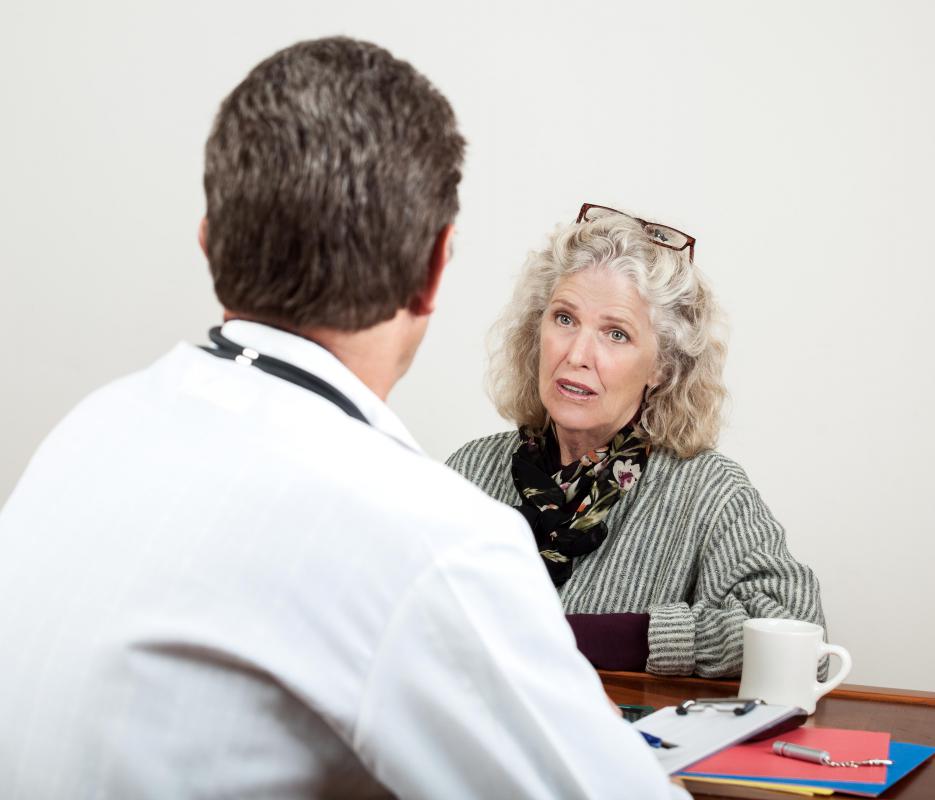At WiseGEEK, we're committed to delivering accurate, trustworthy information. Our expert-authored content is rigorously fact-checked and sourced from credible authorities. Discover how we uphold the highest standards in providing you with reliable knowledge.
What Are the Most Common Estrogen Replacement Therapy Side Effects?
Estrogen replacement therapy (ERT) is often prescribed for women as part of hormone replacement therapy during menopause. Although taking estrogen may help relieve certain symptoms associated with menopause, it can also have side effects. Estrogen replacement therapy side effects may include weight gain, headache, nausea, and bloating. Various other side effects can also occur, such as vaginal bleeding or discharge, stomach pains and fainting.
The severity of side effects with estrogen replacement therapy varies widely among women. Some women only experience a few side effects for a brief time, while others may have more significant side effects. Some side effects develop initially when estrogen therapy is started, but for some women, these may decrease after a few weeks.

In additional to physical symptoms, some women may also have mood changes. Depression, which may vary in severity, may occur. Memory loss is among other possible side effects of estrogen therapy. There may also be an increased risk of developing dementia in women who take estrogen replacement therapy.
ERT may be prescribed in various forms, including a pill, patch, or cream. Women who use ERT in the form of a patch may develop skin irritation at the application site. Although estrogen replacement therapy side effects can occur with all forms of therapy, side effects do occur more frequently in patients who use the oral form of ERT.

Women should be aware serious estrogen replacement therapy side effects can occur. Understanding all possible serious side effects can help a woman make an informed decision when deciding on hormone replacement therapy. One of the most serious side effects and risks associated with estrogen replacement therapy is the slightly increased risks of a stroke and blood clots.
Although it may not develop in most women taking estrogen replacement therapy, there may be an increased risk of developing breast and ovarian cancer. The risk appears to be in women who take ERT for 10 years or more. More research is needed to determine if there is a direct link between ERT and breast cancer.
If estrogen replacement therapy side effects are causing significant problems, women should discuss alternatives to treating menopause symptoms. Low-dose estrogen therapy may be an option in some cases. Estrogen therapy can also be combined with the hormone progesterone, which may be better tolerated in some women. Switching from an oral form of estrogen therapy to a patch or cream may also help some women with ERT side effects.
AS FEATURED ON:
AS FEATURED ON:












Discuss this Article
Post your comments